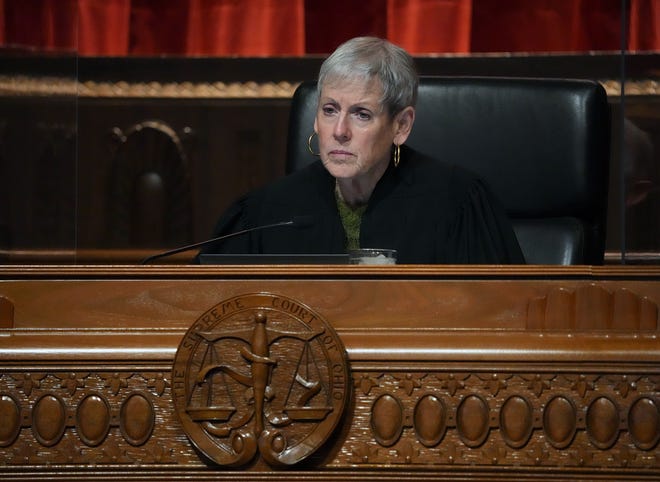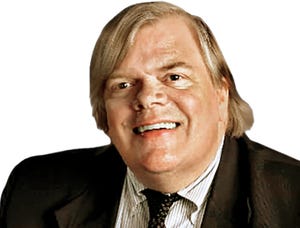Ohio Supreme Court races most contested in decades

The Ohio Supreme Court’s Monday decision overturning – for the second time – a GOP-crafted map for Ohio General Assembly districts guarantees two things:
The first thing is more dueling between the (Republican-led) court and the Republican-run General Assembly’s leaders.
Redistricting:Lawmakers can’t get votes for Congressional map, punting to Ohio Redistricting Commission
The second thing is that this year’s Ohio Supreme Court election will be the most heavily fought election since 1986, when voters unseated a Democratic chief justice, Greater Clevelander Frank D. Celebrezze, and returned the Ohio Supreme Court to what the court traditionally had been – “Republican, conservative and relatively quiet,” in the words of the eminent Ohio State political scientist, Lawrence Baum.

The state Supreme Court is now 4-3 Republican.
But Chief Justice Maureen O’Connor, a Greater Cleveland Republican, has sided with the court’s three Democrats to overturn congressional districts and General Assembly districts drawn by the Statehouse’s top Republicans, House Speaker Robert Cupp and Senate President Matt Huffman, both of Lima, with the cooperation (or at least the non-opposition) of Gov. Mike DeWine, State Auditor Keith Faber and Secretary of State Frank LaRose, who are also Republicans.
Redistricting:Why all eyes will be on Ohio Supreme Court’s Maureen O’Connor during redistricting lawsuits
Because O’Connor can’t seek re-election due to Ohio’s constitutional age-limit for judges, one of Ohio’s fiercest contests this year will be between two other justices to succeed O’Connor as chief – Democratic Justice Jennifer Brunner and Republican Justice Sharon Kennedy.
As previously noted, the contest between Kennedy and Brunner won’t necessarily change the court’s 4-3 Republican makeup; that will depend on contests for two (associate) justiceships, likewise certain to be hard-fought.
Still, chief justice is the catbird seat on the seven-member court: the chief justiceship gives whoever holds that office great sway (official and unofficial) over Ohio’s courts, judges and legal profession.
For generations, it suited the Powers That Be in Ohio – banks, insurance companies, major industrialists – to claim the Supreme Court was a kind of cloistered priesthood, whose only real job was to dust off the Revised Code from time to time, read a section out loud as if it were Scripture, and – presto – case closed.
Suddes:Ohio Republicans fretting about next Supreme Court contests
Independent thinking was about as welcome as boat-rocking on rough waters, despite the Ohio Bill of Rights’ guarantee that “every person, for an injury done him … shall have remedy by due course of law and … have justice administered without denial or delay” even if that requires a remedy crafted by judges.
There’s no denying the political and personal factors that contributed to Frank Celebrezze’s defeat in 1986 and to the return of a GOP majority to the Supreme Court – a majority that has endured now for 36 years. His mode of superintending the judiciary at times echoed what unsmiling downstate bystanders sometimes call “Cleveland politics.”
And the Celebrezze court took on virtually every business lobby in 1982’s Blankenship decision. In that ruling, a court majority said that – despite common belief – workers’ compensation was not the only way that Ohio workers could be compensated for an on-the-job injury if it was caused by an employer’s intentional acts. In such cases, workers could also sue.
The opinion was written by Democratic Justice William B. Brown, of Chillicothe, a Harvard Law grad. But Celebrezze’s vigorous concurrence – that workers’ comp “(was) not the exclusive avenue open to employees … for injuries arising out of workplace hazards” – struck big business like a lightning bolt, sparking a mammoth drive to remake the Supreme Court, a drive that succeeded in 1986.
Suddes:General Assembly’s antics show why Supreme Court should end ‘get-along, go-along’
Now, a third of a century later, the Supreme Court has gone along with General Assembly antics – such as twisting, like a pretzel, the one-subject rule for legislation, passing “tort reforms” flouting Ohio’s Bill of Rights. But the remapping rulings suggest the court, or at least a majority of its members, has just about had it. If that doesn’t mobilize the Powers That Be, nothing can.
Result: It’s likely that, along with Mike DeWine’s quest for re-election, and competition for the Senate seat that suburban Cincinnati Republican Rob Portman is leaving, the 2022 campaigns for three Ohio Supreme Court seats will be the highest-profile in decades – and feature the highest stakes.
Thomas Suddes is a former legislative reporter with The Plain Dealer in Cleveland and writes from Ohio University. [email protected]
Read More: Ohio Supreme Court races most contested in decades

